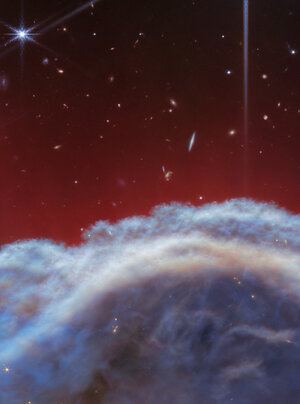Accept all cookies Accept only essential cookies See our Cookie Notice

About ESA
The European Space Agency (ESA) is Europe’s gateway to space. Its mission is to shape the development of Europe’s space capability and ensure that investment in space continues to deliver benefits to the citizens of Europe and the world.
Highlights
ESA - United space in Europe
This is ESA ESA facts Member States & Cooperating States Funding Director General Top management For Member State Delegations European vision European Space Policy ESA & EU Space Councils Responsibility & Sustainability Annual Report Calendar of meetings Corporate newsEstablishments & sites
ESA Headquarters ESA ESTEC ESA ESOC ESA ESRIN ESA EAC ESA ESAC Europe's Spaceport ESA ESEC ESA ECSAT Brussels Office Washington OfficeWorking with ESA
Business with ESA ESA Commercialisation Gateway Law at ESA Careers Cyber resilience at ESA IT at ESA Newsroom Partnerships Merchandising Licence Education Open Space Innovation Platform Integrity and Reporting Administrative Tribunal Health and SafetyMore about ESA
History ESA Historical Archives Exhibitions Publications Art & Culture ESA Merchandise Kids Diversity ESA Brand Centre ESA ChampionsLatest
Space in Member States
Find out more about space activities in our 23 Member States, and understand how ESA works together with their national agencies, institutions and organisations.
Science & Exploration
Exploring our Solar System and unlocking the secrets of the Universe
Go to topicAstronauts
Missions
Juice Euclid Webb Solar Orbiter BepiColombo Gaia ExoMars Cheops Exoplanet missions More missionsActivities
International Space Station Orion service module Gateway Concordia Caves & Pangaea BenefitsLatest
Space Safety
Protecting life and infrastructure on Earth and in orbit
Go to topicAsteroids
Asteroids and Planetary Defence Asteroid danger explained Flyeye telescope: asteroid detection Hera mission: asteroid deflection Near-Earth Object Coordination CentreSpace junk
About space debris Space debris by the numbers Space Environment Report In space refuelling, refurbishing and removingSafety from space
Clean Space ecodesign Zero Debris Technologies Space for Earth Supporting Sustainable DevelopmentLatest
Applications
Using space to benefit citizens and meet future challenges on Earth
Go to topicObserving the Earth
Observing the Earth Future EO Copernicus Meteorology Space for our climate Satellite missionsCommercialisation
ESA Commercialisation Gateway Open Space Innovation Platform Business Incubation ESA Space SolutionsEnabling & Support
Making space accessible and developing the technologies for the future
Go to topicBuilding missions
Space Engineering and Technology Test centre Laboratories Concurrent Design Facility Preparing for the future Shaping the Future Discovery and Preparation Advanced Concepts TeamSpace transportation
Space Transportation Ariane Vega Space Rider Future space transportation Boost! Europe's Spaceport Launches from the European Spaceport from 2012Latest

Twisters in the Lagoon Nebula
Thank you for liking
You have already liked this page, you can only like it once!
This Hubble Space Telescope image reveals a pair of half light-year long interstellar 'twisters' - eerie funnels and twisted-rope structures - in the heart of the Lagoon Nebula (Messier 8) which lies 5000 light-years away in the direction of the constellation Sagittarius. The central hot star, O Herschel 36 (lower right), is the primary source of the ionising radiation for the brightest region in the nebula, called the Hourglass. Other hot stars, also present in the nebula, are ionising the extended optical nebulosity. The ionising radiation induces photo-evaporation of the cloud surfaces and drives away violent stellar winds tearing into the cool clouds. Analogous to the spectacular phenomena of Earth tornadoes, the large difference in temperature between the hot surface and cold interior of the clouds, combined with the pressure of starlight, may produce strong horizontal shear to twist the clouds into their tornado-like appearance. Though the spiral shapes suggest the clouds are twisting, future observations will be needed, perhaps with Hubble's next-generation instruments, with the spectroscopic capabilities of the Space Telescope Imaging Spectrograph (STIS) or the Near Infrared Camera and Multi-Object Spectrometer (NICMOS), to measure velocities. These colour-coded images are the combination of individual exposures taken in July and September 1995, with Hubble's Wide Field Planetary Camera 2 (WFPC2) through three narrow-band filters (red light-ionised sulphur atoms; blue light-double ionised oxygen atoms; green light-ionised hydrogen). This work is based on public data retrieved from the HST Archive, cosmic-ray cleaned, calibrated and combined by Adeline Caulet (ESA's Space Telescope European Coordinating Facility). The data were collected as part of a scientific HST program by the WFPC2 Science Team. [Image Date: 22-01-97] [97.02.005-001]
-
CREDIT
A. Caulet (ST-ECF, ESA) and NASA -
LICENCE
ESA Standard Licence

'An Infrared negative of a bright nebula'

ISO image of Horsehead Nebula

Return to the Veil Nebula

Slider Tool (Webb NIRCam and MIRI images)















 Germany
Germany
 Austria
Austria
 Belgium
Belgium
 Denmark
Denmark
 Spain
Spain
 Estonia
Estonia
 Finland
Finland
 France
France
 Greece
Greece
 Hungary
Hungary
 Ireland
Ireland
 Italy
Italy
 Luxembourg
Luxembourg
 Norway
Norway
 The Netherlands
The Netherlands
 Poland
Poland
 Portugal
Portugal
 Czechia
Czechia
 Romania
Romania
 United Kingdom
United Kingdom
 Slovenia
Slovenia
 Sweden
Sweden
 Switzerland
Switzerland

























